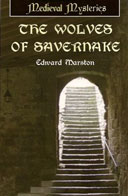Swimming Lessons Claire Fuller (2017)
On the southern coast of England, across from the Isle of Wight, the sea is a relentless presence. If you’ve had swimming lessons, you might venture out into the frigid waters, to contest with the treacherous currents. Two of the characters in this novel feel an inexorable pull to the sea, and they’re both strong swimmers.
One is Ingrid Coleman, wife to Gil and mother to Nan and Flora. She disappeared twelve years before the main action of the novel, presumably drowned despite her expertise at swimming. In the month before she disappeared in 1992, she wrote long letters to Gil, recalling how they met in London in 1976, married, and moved into a ramshackle house on the beach. Ingrid’s letters form about half of the text of Swimming Lessons, though where the letters are to be found is mysterious. Ingrid slipped each one into a book that linked thematically to that segment of her story, but Gil owns so very many books that the letters would be hard to locate.
Flora is the second strong swimmer of the novel. She’s never recovered from Ingrid’s disappearance when she was a child, and she displays her anger and grief in her adult relationships. Flora’s point of view is represented in the non-epistolary portions of Swimming Lessons, taking place in the present day. She clings to the belief that her mother is still alive, and she swims on the same beach where Ingrid vanished. “The water was the colour of mint tea, and sometimes if she listened hard enough, her mother’s voice sounded amidst the swish of the weed and the tumble of the sand, telling her to straighten her legs, to keep her lead hand in motion, to swim against the current so that it was always easy to return, even when tired.” (162)
The present-day crisis that brings Flora, her sorta-boyfriend Richard, and her sister back to the family home is Gil’s hospitalization from a bad fall that he takes while chasing after a woman he thinks is Ingrid. Whether the woman actually is Ingrid or whether Gil is hallucinating is another of the mysteries in this novel, which is not officially billed as a mystery.
Despite the richness of the writing, I wanted author Claire Fuller to develop the characters of Nan and Gil more fully. From the evidence presented, Gil is a reprehensible fellow—a middling writer and a manipulative womanizer who lies obnoxiously to cover his tracks. The clutter of his life is reflected in the stacks of books that fill his house to overflowing: “Hardbacks about space and time, paperbacks about love affairs, tumbling together with poetry pamphlets and novella, knocked the top off another stack and then another, like a line of dominos.” (312)
Although I didn’t get enough of a sense of Nan and Gil, the forward movement of the narrative is kept brisk by unanswered plot questions, with twists and turns right up to the end. Meanwhile, Fuller tosses out sumptuous descriptions like this one: “She . . . took the uphill footpath through the small beech wood, the trees stained by streaks of copper where the rain dripped in slippery runnels. She slapped their trunks with the palm of her hand as she passed, as if she were whacking the meaty rumps of giant horses.” (261)
The moral of the story, if that might be allowed, may be that when people are not honest with each other they can be swept away from those they love. Claire Fuller is an author to keep an eye on.























